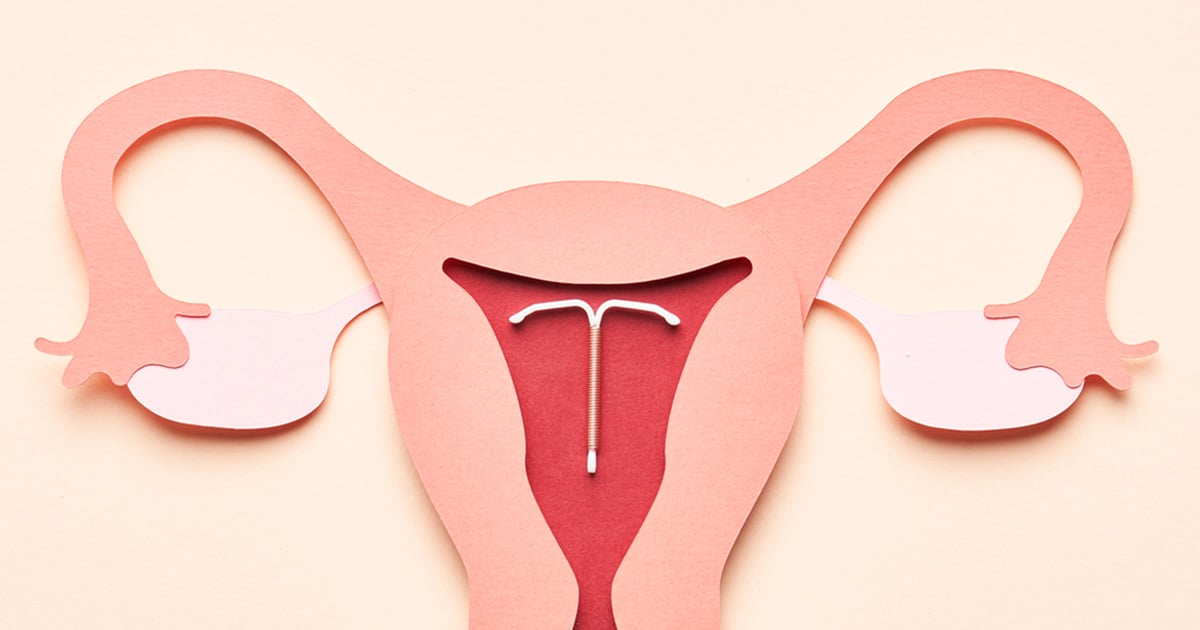IUD insertion hurts. Often a lot. So why don’t doctors seem to care?
If we had to summarize the videos that populate the #IUDexperience hashtag on TikTok, which has over 47.2 million views, that’s how we’d do it. In fact, a 2023 study in the journal Obstetrics & Gynecology analyzed the 100 most popular IUD-related posts on the platform, including 31 that highlighted patients’ experience with insertion or removal; of the latter, “all had a negative or ambiguous tone and 96.8% highlighted pain,” the study authors wrote.
“The trending TikTok videos documenting . . . painful experiences and medical gaslighting around IUD insertion . . . highlight a real problem of female pain not being taken seriously,” says Melanie Bone, consultant ob-gyn and US Medical Director at the gynecological health company Daye. This, she says, can erode patient trust in their doctors and the medical system. This was also reflected in the Obstetrics & Gynecology study, with over a quarter of creators expressing distrust towards their providers and some instances of having their experiences invalidated or denied.
The damage caused by having your pain ignored or even denied by a medical professional should be clear. But in a post-Roe world, with the reproductive autonomy of women being limited, anything that interferes with access to effective birth control is even more dangerous. And the communication gap that exists between patients and healthcare professionals around IUD pain risks deterring people from using IUDs, one of the most effective methods of contraception. If it continues to go unaddressed, Michael Reed, MD, ob-gyn, worries that it could lead to an increase in unplanned pregnancies – the number of which, he points out, has declined for the first time in years, according to Centers for Disease Control and Prevention data.
On Aug. 8, the CDC released updated recommendations for IUD-related pain management, which is a step in the right direction – but only a small one. Here’s what experts have to say about IUD pain and what you can do to protect yourself if you’re interested in getting (or removing) an IUD.
Experts Featured in This Article
Melanie Bone, MD, is a consultant ob-gyn and US Medical Director at the gynecological health company Daye
Michael Reed, MD, is an ob-gyn and cosmetic gynecologist based in California.
Stephanie Hack, MD, is an ob-gyn, podcast host, and public speaker.
Gunvor Ekman Ordeberg, MD, is an ob-gyn and co-founder of DeoDoc Intimate Skincare.
Why IUD Insertion Can Be Painful
Pain is subjective, and some individuals may find IUD insertion or removal more or less uncomfortable than others. But what’s clear is that for many people, the procedure causes something nearing agony.
“Getting my IUD inserted hurt worse than my C-section did,” says Caitlin Kavanaugh, mother to twins. “Having not gone through labor, I had no idea what cervical dilation felt like. I remember feeling like I had to dissociate from my body to make it through.”
Similarly, Myra Chavez tells PS that her second IUD insertion hurt worse than her three vaginal, unmedicated births. Heaven Taylor says that she fainted upon standing after the procedure.
Stephanie Hack, MD, an ob-gyn, podcast host, and public speaker, says that multiple steps during an IUD insertion are “uncomfortable, due to the need to manipulate and pass through the cervix.” The worst pain occurs “the moment the IUD passes through the cervical canal into the uterus,” Dr. Hack says, adding that patients describe this as a sharp pain or cramp that can last for a few minutes.
Dr. Reed notes that the instruments used also play a role. The tenaculum (gynecological forceps that are used to stabilize the cervix during IUD insertion by pinching the tissue) has scarcely been updated since the Civil War era, she says. It has sharp ends that can cause cramping and bleeding.
Recently, a new tool named Carevix was developed; it uses suction instead of pressure to secure the cervix, and may help reduce insertion pain, according to a preliminary study from Switzerland. The only problem is, it’s difficult to find a provider that has the tool.
Why IUD Pain Is Under-Addressed
Even if some people tolerate IUD pain well, it’s clear that others find the procedure to be debilitating. So why isn’t the pain better managed?
“The [macro-level] answer is simple: women’s health is not a priority of big pharma,” says Gunvor Ekman Ordeberg, ob-gyn and co-founder of DeoDoc Intimate Skincare.
There’s a general focus on IUD efficacy over patient experience, Dr. Bone says. There’s also an established gender bias in medicine toward women’s pain, and especially toward Black and Latina women’s pain – sometimes called the Gender Pain Gap – that leads to it going dismissed and overlooked. As a result, there’s a lack of evidence-based research into IUD pain management. Plus, that research isn’t being prioritized by professional societies like the American College of Obstetricians and Gynecologists, which would help doctors devise better treatment plans and get IUD pain management covered by insurance companies, Dr. Bone says.
As a result, until recently there’s been no standard protocol for managing IUD insertion pain, according to a 2024 review published in the journal Cureus. Prior to the Aug. 8 update, the CDC’s guidelines were indefinite, stating that a lidocaine injection – a technique that’s been shown in a study in Obstetrics & Gynecology to ease IUD discomfort – “might reduce” IUD insertion pain.
The latest recommendations are expanded to include topical lidocaines as well, and encourage practitioners to counsel their patients on the pain they might experience and about their different pain management options to come up with an individualized plan.
The hope is that the expanded guidance will help standardize pain management protocols. In the absence of a standard protocol, different medical practices take different approaches toward pain management.
For instance, one person who spoke to PS, Kerry Giannantonio, says her doctor rescheduled her insertion appointment to prescribe an intravaginal pain tablet to improve her experience. But Kavanaugh, who considered her IUD insertion to be more painful than her C section, was counseled to “take a dose of Ibuprofen” when she proactively inquired about pain management before her appointment. It clearly didn’t make much of a dent in Kavanaugh’s pain, and in fact, Dr. Reed tells PS that Naproxen and ibuprofen are not shown to help with insertional pain, only post-procedure discomfort.
The US even lags in its pain management options. In Europe, a new anesthetic gel called Lidbree was approved specifically for procedures like IUD insertion. But it’s not available in the US; according to Dr. Ordeberg, an American company bought the rights to the product but “did not move forward as they do not think the product is a need in the American market.” It’s safe to say that many of the people posting under the IUD hashtag on TikTok may disagree.
Why Under-Addressed IUD Pain Is a Problem
Dr. Ordeberg states unequivocally that she and her research team believe the unmanaged pain of IUD insertion deters people from using the long-acting reversible contraceptive. Dr. Hack agrees that there are many people opting for other forms of birth control due to the pain of IUD placement at medical practices.
But the IUD has many advantages, which makes the fact that people may avoid it because of insertion pain all the more discouraging. It’s the most effective contraceptive when it comes to preventing unwanted pregnancies. It also comes in a non-hormonal option, for those who don’t tolerate hormonal birth control well.
“Pain management should be offered to all patients considering an IUD,” Dr. Reed states. “The one positive of this recent social media attack on [the IUD insertion experience] is that it has highlighted the need for physicians to be more aware of the patient experience, and to discuss solutions for decreasing insertional pain before IUD placement.”
“This [problem of unaddressed pain] needs to change and it needs to change quickly if we want to provide excellent healthcare experiences to patients,” agrees Dr. Bone. “The medical community needs to believe pain experiences and to proactively discuss and manage patient pain. Normalizing pain relief can help make IUDs a more attractive option, producing positive contraception experiences for patients.” He says that in addition to regulators like the CDC offering clear guidance to providers about offering pain management options during IUD insertions, some responsibility falls upon the mezzo-level organizations that help to direct and fund the direction of future research. There’s still not enough data out there about what pain management options are best; once an optimal protocol is established, insurance companies will theoretically get on board.
Speaking personally, I love my IUD and I had a relative positive experience with insertion. But I still had to reason with myself that “the pain of insertion will be less painful than hours of labor” to get through the procedure. Had I known that I could have requested pain management, I would have.
What You Can Do to Make IUD Insertion More Bearable
All the experts encourage you to proactively ask for pain management and to advocate for yourself if your physician pushes back. If they refuse, Dr. Hack encourages you to seek a second opinion. “A good physician will be open to discussing and providing appropriate pain management strategies,” she says, especially in light of the updated CDC guidelines. Dr. Bone adds that you should not be intimated to ask why they aren’t offering a solution.
It can be useful to come armed with specific asks, Dr. Reed says. He names the following pain management options to know about. “There’s evidence-based research that shows that ketorolac [an NSAID] helps with insertional and post-procedure pain,” he says. “Other options that can help to make the insertion less painful include local analgesia like numbing creams or paracervical blocks and cervical ripening agents.” Contrary to what you might expect, he says that placement during a menstrual cycle might also make the procedure less painful, due to the cervix being slightly opened.
Ultimately, the hope is that doctors will be the ones providing these options to you. But until then, knowing that your concern over IUD pain is valid and there is effective pain management available to you can go a long way toward ensuring you have a positive IUD experience.
Jessica Ourisman is a freelance beauty and wellness editor who frequently writes about skincare and cosmetic dermatology for PS, Harper’s Bazaar, Allure, InStyle, The Zoe Report, Coveteur, WWD, and more.



